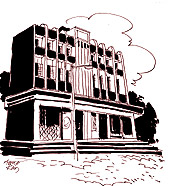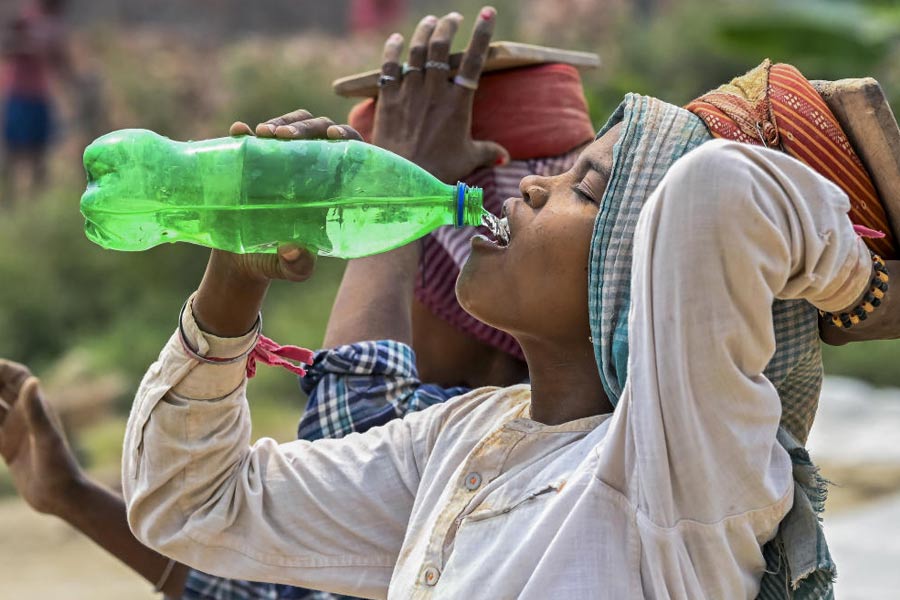 |
In early 1926, a hospital started functioning at Guwahati without any doctor. But when the hospital, meant exclusively for women, completed its first year, records showed that it treated 4,484 patients including 25 indoor ones. This was Satribari Christian Hospital, which has been rendering yeomen’s service to the people of the northeastern India.
As early as in 1915, the Women’s Council of the Assam Baptist Convention adopted a resolution to set up a hospital at Guwahati exclusively for women and the proposal was forwarded to the American Baptist Mission. The Women’s Council consisted of ladies who came from different parts of the US, particularly from Kansas, Nebraska and Iowa, on missionary and other works and were stationed at different parts of Assam.
The mission accepted this proposal on principle, but no final decision could be taken. Two problems — selection of a suitable site and non-availability of qualified doctors — delayed the whole process.
The Women’s Council had two points to justify their proposal to have the women’s hospital in Guwahati. Firstly, there was no exclusive healthcare centre for women in the entire lower Assam, where, otherwise, healthcare facilities already existed. The second argument was based on a survey that the Women’s Council had conducted in some villages of lower Assam. The survey pointed out: “In lower Assam, the women live in a more conservative society where the men do not permit their women to be examined by male doctors. Women, particularly the young mothers, suffer from malnutrition and post-natal care which is pathetically unhygienic.”
The American Baptist Mission now had to consider “the forceful arguments forwarded by the honourable members of the Women’s Council.” In 1920, the mission resolved to start the hospital at Guwahati and its construction started in 1923.
The 25-bed hospital was ready by 1925, but no lady doctor was available to serve there. However, Millie Marvin, a dedicated missionary nurse, came up for its rescue and started the hospital with four of her students. A few months later, E. Stever, another trained missionary nurse, joined the hospital. In the first year itself, they treated 4,484 patients.
Dr Lahori Bhuyan joined the hospital as its first lady doctor. As the inflow of patients increased, the service of Dr Martha J. Gifford of the American Baptist mission, Burma, was requisitioned in 1927. But during the initial years, staff-retention became a genuine problem because of a variety of reasons.
The situation stabilised only during the 1930s. Since then, a good number of reputed physicians headed the institute from time to time, including luminaries like Dr G. Allens, Dr Webster, Dr Merchant, Dr L. Norton, Dr F. Currey and others. Many more doctors and nurses rendered great service to the suffering humanity and were instrumental in making the hospital one of the best in the Northeast.
By 1936, within 10 years of its establishment, the government certified it as an “outstanding institution”.
The hospital has the unique distinction of starting the nursing training programme since its inception. The first nurse graduated from here in 1930. The hospital’s full-fledged nurses’ training centre has been affiliated to the Nursing Association of India since the 1940s. Satribari Christian Hospital had a testing time during the World War II.
Medical facilities being inadequate in Assam, the services of the hospital were requisitioned by the government in 1940 and this was made a referral hospital along with the civil hospital during the war. Allied soldiers of different nationalities — Chinese, Burmese, American, British and Indian — were treated here.
Doctors had a difficult time when the inflow of patients increased tremendously in 1944 when war knocked on the Indian border, particularly during the battle of Kohima and Manipur. To cope with the pressure, the Red Cross emergency unit was also pressed into service. In the process, the women’s hospital was converted to a general hospital and soldiers were provided treatment during the war.
Started with the provision for treatment of only 25 patients, the hospital today has nearly 200 beds and a staff strength of more then 100. Its activities have increased manifold. A community health project centre for mother and childcare has been added to its network. This now includes a rural centre at Borbituli near Sonapur.
Memories of Angel Marvin and Dr Mundhenk are still vivid in the mind of Maya Banerjee, a senior citizen of Guwahati, who was admitted to the hospital with serious illness during the 1950s. When she recovered, she presented two sets of pens to Marvin and Dr Mundhenk as a mark of gratitude, but they called four trainee nurses and requested Banerjee to give the pens to them.
“Thank you for the nice gift. Not we, but God has saved your life. Whenever you give something, give it to those who are in need. We in this hospital have come to serve the people. It is our mission. Serve the needy if you can afford it,” Dr Mundhenk said. This tradition still thrives at Satribari Christian Hospital.
Dipankar Banerjee










